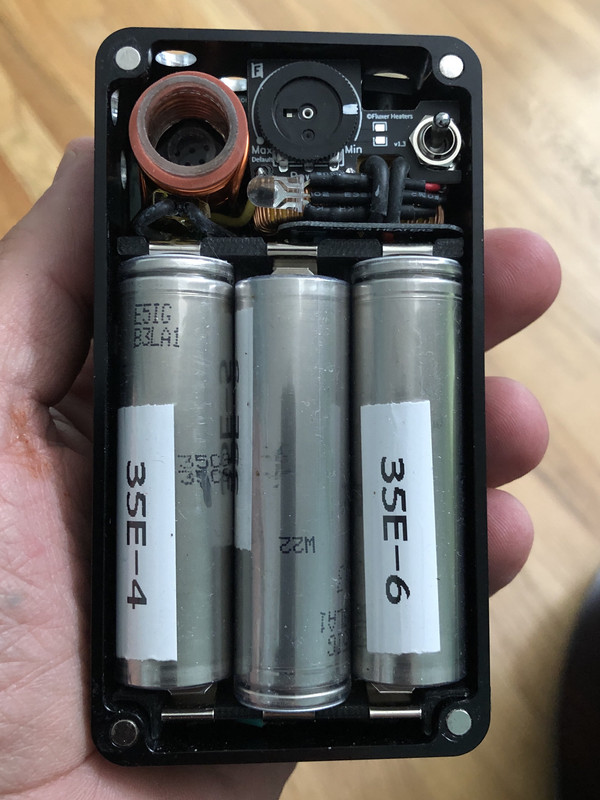Hi all,
OK.
I have the right fix now - no, really!  - and can finally close the book on this MOSFET and diode failure stuff.
- and can finally close the book on this MOSFET and diode failure stuff. The higher voltage diodes are working very work. I will be using them in both repairs and new heaters. Huzzah!
 Repairs:
Repairs: If you sent your heater to me for repair, I am now in the process of repairing it and returning it to you. I will be in touch w/you shortly. I began repairing heaters last night (Tuesday), and expect to be finished with the repair backlog by Thursday or Friday.
To everyone with a Flux Deluxe: If (or when) your heater needs repair, please contact me and we will arrange the details. I have plenty of the right parts on hand to fix these heaters. The repair takes ~30 minutes, and the heater should be well protected against voltage spikes and similar events afterwards.
Technical details: They're below. No need to read if you don't want to - it won't be on the test

- but I know some of you appreciate this info, so here it is.
I tried several different TVS diodes in the heater.

In the end, the 27V TVS diodes did a the best job of protecting the circuit while also staying out of the way until needed.
The following oscilloscope graph shows the circuit's response to the higher "onset" voltage TVS diodes (27V) when the tactile switch is opened and the voltage spike is generated. The yellow line is the system voltage, and it is OK if it runs high; as shown previously, when unprotected it can run as high as 100V+ for fractions of a second. The purple line is the voltage on the Source pin of the MOSFET, and it has a max of 40V. It is measured downstream of where the yellow line is measured, and the difference represents the power dissipated by the circuit. If a TVS diode is present, that power can easily dissipate through it, otherwise, it dissipates through the circuit's other components, and they aren't very good at doing that.
The important things to notice are the maximum voltage values, which are very safe, and the smoothness of the post-event response, which is great:
Response of 14mm coil when tactile switch is released. NB: In the above image the two lines are using different scales, and the voltage represented by the yellow line is 4x greater than the purple's.
The bottom line: These 27V TVS didoes should work very well and provide voltage spike protection when needed, and stay out of the way the rest of the time.









Once I complete these repairs - another day or two - I will be moving ahead with the next batch of heaters. I have a new jig I made for drilling the cases that is going to save me many,
many steps per case. More on that, and some hinted-at new features, in an upcoming post.

Thanks for following along. If you are on the waiting list, I hope to build a heater for you soon!

Cheers,




 Thanks for your patience while I worked through these issues!!
Thanks for your patience while I worked through these issues!!
 - and can finally close the book on this MOSFET and diode failure stuff.
- and can finally close the book on this MOSFET and diode failure stuff.
 - but I know some of you appreciate this info, so here it is.
- but I know some of you appreciate this info, so here it is.







 The learning curve on this project has been steep at times. This has been one of those times.
The learning curve on this project has been steep at times. This has been one of those times. 

